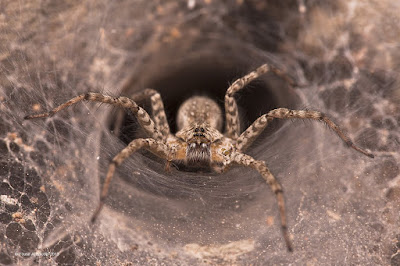“Beautiful!”
This ringing endorsement that something or someone is aesthetically pleasing remains an often used adjective to describe an appeal with a very high standard of excellence. Yet, what common standards do we employ in the judgment of beauty? Can they even be articulated?
Philosophers have long been interested in beauty. The nature of beauty is one of the most enduring and controversial themes in Western philosophy. The Stanford Encyclopedia of Philosophy states that beauty has “traditionally been counted among the ultimate values, with goodness, truth, and justice.”
Beauty is a primary theme among ancient Greek, Hellenistic, and medieval philosophers. And, it was central to eighteenth and nineteenth-century thought, as represented in treatments by such thinkers as Shaftesbury, Hutcheson, Hume, Burke, Kant, Schiller, Hegel, Schopenhauer, Hanslick, and Santayana. By the beginning of the twentieth century, beauty was in decline as a subject of philosophical inquiry, and also as a primary goal of the arts. However, there were signs of revived interest by the early 2000s.
Is beauty subjective – located ‘in the eye of the beholder’-- or is it an objective feature of things?
Camps of thought include:
- The classical conception is that beauty consists of an arrangement of integral parts into a coherent whole, according to proportion, harmony, symmetry, and similar notions.
- The idealist conception is conceived – in contrast to the classical aesthetics of integral parts and coherent whole – as perfect unity, or indeed as the principle of unity itself.
- Also, some ascribe to a theory based in the ancient tradition of “love and longing” and profess that beauty is related to qualities in bodies, “by which they cause love, or some passion similar to it.”
- Many hedonistic thinkers of the 18th century accounted for beauty in terms of pleasure. “By beautiful we generally understand whatever, when seen, heard, or understood, delights, pleases, and ravishes us by causing within us agreeable sensations.”
- Philosophers in the Kantian tradition identify the experience of beauty with disinterested pleasure, psychical distance, and the like, and contrast the aesthetic with the practical. “Taste is the faculty of judging an object or mode of representing it by an entirely disinterested satisfaction or dissatisfaction. The object of such satisfaction is called beautiful.”
(Crispin Sartwell. Stanford Encyclopedia of Philosophy. 2016.)
All of these philosophies seem to apply to our concept of beauty. Yet, the boundaries of aesthetics stretch beyond this thought. There are so many times we experience awe associated with beauty and feel totally unsure of what has struck us as “beautiful.” Could such a common appraisal be somehow explained? Is there some way we can know what strikes us as intensely beautiful?
Well …
Tomohiro Ishizu and Semir Zeki from University College London conducted research that found that people from all kinds of different cultural/gender/age backgrounds have a similar response to works of visual art and music they believe possess beauty.
Zeki found, by examining MRI images of his subjects’ brains, that when people look at something they find beautiful, a portion in the front part of the brain called the medial orbito-frontal cortex “lights up.” That is, there’s increased blood flow in this area. He believes it’s a near-universal response to beauty.
The visual stimuli included paintings of portraits, landscapes and still lifes … The auditory stimuli included classical and modern excerpts.The research team emphasizes their theory is tentative and will “stand or fall” with future theories. They wrote:
“Our proposal shifts the definition of beauty very much in favor of the perceiving subject and away from the characteristics of the apprehended object. Our definition… is also indifferent to what is art and what is not art. Almost anything can be considered to be art, but only creations whose experience has, as a correlate, activity in mOFC (medial orbitofrontal cortex) would fall into the classification of beautiful art… A painting by Francis Bacon may be executed in a painterly style and have great artistic merit but may not qualify as beautiful to a subject, because the experience of viewing it does not correlate with activity in his or her mOFC.”
(Tomohiro Ishizu and Semir Zeki. “Toward A Brain-Based Theory of Beauty.”
PloS. July 06, 2011.)
By contrast, Zeki said, he found that when people see something that’s aesthetically displeasing – something they find ugly – it lights up a completely different part of the brain ( the amygdyla).
This study doesn’t necessarily mean that all forms of beauty are represented in the same way in the brain, and, granted, other parts of the brain could play a role. Yet, it does confirm that seeking beauty is seeking to reward our pleasure centers and stimulate us with dopamine, the feel-good chemical of the brain. The degree of activity in the medial orbito-frontal cortex correlates very strongly to the degree to which we find a thing attractive.
To close, it seems that our brains find common ground in beauty even if we are unable to articulate exactly what is “beautiful.” I'm not sure of all the implications of this finding; however, anything that increases dopamine is sure to have lasting appeal. This view of beauty makes one think of the id, the personality component made up of unconscious psychic energy that works to satisfy basic urges, needs and desires. After all, the id acts according to the pleasure principle. Beauty surely stimulates the id.
The id relies on the primary process to temporarily relieve the tension. The primary process involves creating a mental image either through daydreaming, fantasizing, hallucinating, or some other process.
Freud believed the id is a reservoir of instinctual energy and also compared it to a "cauldron of seething excitations" with no real organization.
Who hasn't seen something unresistably alluring, found themselves in that steamy bucket of admiration, and set sail for the life fantastic? Blame it on your happy mOFC – it just took a sweet hit for the beautiful.
What photos do you think qualify as “beautiful”?







No comments:
Post a Comment